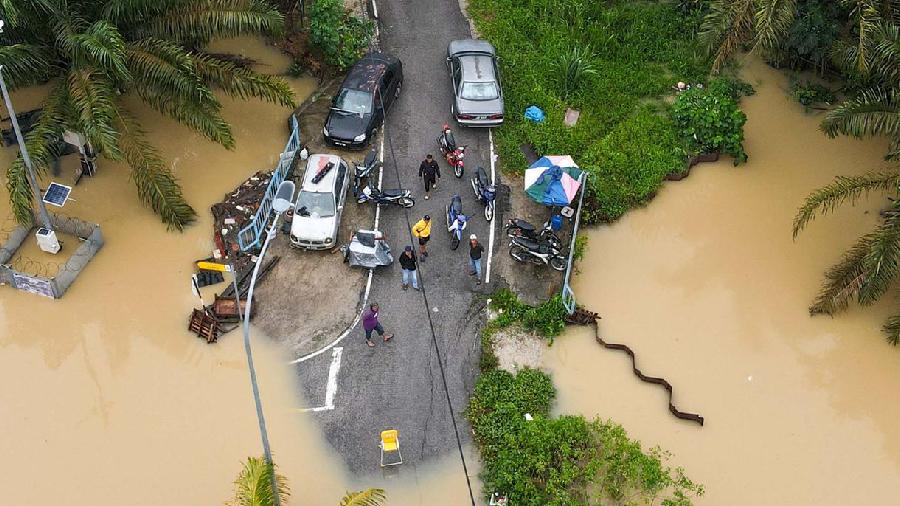Several states in Malaysia's south have been hit by massive floods amid the country's monsoon season, with more than 41,000 people forced to flee their homes across the region.
Officials say the floods, which have caused at least four fatalities in the past week, are some of the most severe ever to hit the country.
What is the flood situation in Malaysia?
The southern state of Johor, which borders Singapore, is the worst-hit of six Malaysian states affected by the flooding.
Almost 40,000 people have left their homes in the state to seek refuge from the rising waters, and more than 1,000 were forced to evacuate in five other states. Authorities have set up more than 200 relief shelters for displaced people, according to the national disaster management agency.
Relief efforts in Johor and elsewhere have been hampered by the torrential rain, which has flooded roads, submerged cars, damaged homes and caused many shops to close.
Police said at least four people had died since Wednesday. The fatalities include a man whose car was swept away by floodwaters and an elderly couple who drowned.
They said the latest fatality was a 68-year-old woman who drowned near her flooded house after leaving an evacuation center in the town of Segamat in Johor.
What has caused the floods?
Floods are common in Malaysia during the annual monsoon season between October and March and often cause mass evacuations and deaths.
However, some environmental officials have said the current flooding is unusual in its intensity and have blamed climate change and human activities for playing a role in the disaster.
The president of the Malaysian Nature Society, Vincent Chow, told the French AFP news agency that the floods were the worst to hit Johor since 1969.
"Now, the weather is unpredictable. Climate change has outfoxed the weatherman," he said.
Meenakshi Raman, the president of the environmental group Friends of the Earth Malaysia, also suggested in comments to the news agency that the large scale of the flooding was partly down to humans.
"Forest and land clearings in the upper reaches of our rural areas, towns and cities lead to our rivers and drains chocked with soil erosion, and they cannot contain the increased volumes of rainfall," she said.
"The over-concretizing of areas also leads to overflows of water, as there is little green left to act as sponges," she added.
The Meteorological Department has warned that the rain could go on until April.











